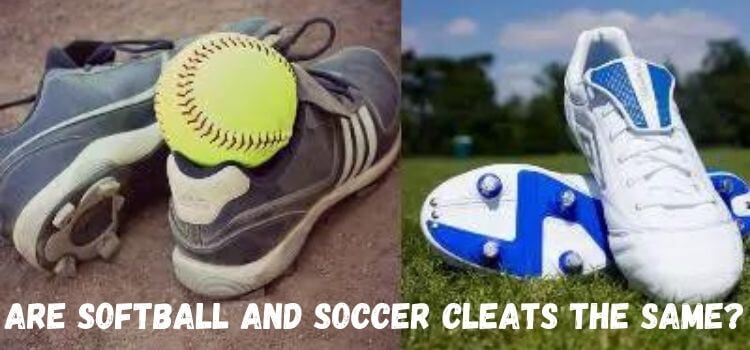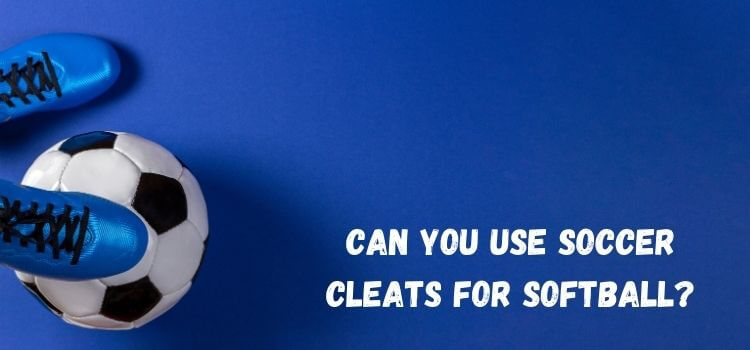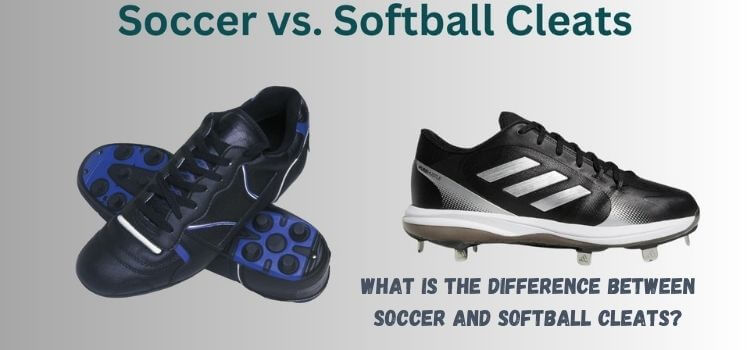As an Amazon Associate, I earn from qualifying purchases
Do you need help choosing the proper footwear for your sports endeavors? “Are Softball and Soccer Cleats the Same?” is a common query among athletes navigating the vast array of athletic footwear options.
In order to avoid injuries and maximize performance, it is essential to understand the differences between softball and soccer cleats. This guide explains the key differences between these two types of cleats, enabling you to choose which is best for your specific sport.
Whether you’re a dedicated softball player or a passionate soccer enthusiast, clarifying the distinctions between these footwear essentials is essential for maximizing your potential on the field. Let’s dive in and unravel the mysteries behind these cleats.

Introduction
Understanding the Differences
Softball and soccer are two popular sports that require specific footwear to optimize performance and prevent injuries. While both sports involve running and quick movements, there are notable differences in the playing surface and the demands placed on the athletes.
This article explores whether softball and soccer cleats are interchangeable or if they are designed for distinct purposes.
The Basics of Softball and Soccer Cleats
What Are Softball Cleats?
Softball cleats are specialized footwear designed for playing softball. They typically feature molded or metal spikes on the outsole to provide traction and stability on the field. Softball cleats come in various styles, including low-cut and mid-cut options, to accommodate different preferences and playing styles.
What Are Soccer Cleats?
Soccer cleats, also known as football boots in some regions, are specifically crafted for playing soccer. They are characterized by their lightweight design and studs or cleats on the outsole, which are strategically placed to enhance grip and maneuverability on grass or artificial turf surfaces.
Soccer cleats are available in different configurations, including firm ground, soft ground, and turf options, to suit various playing conditions.
Key Differences Between Softball and Soccer Cleats
Playing Surface
Softball is typically played on a grass or dirt field, whereas soccer is played on grass, turf, or artificial surfaces. As a result, the design of the cleats varies to accommodate these different playing conditions.
Softball cleats often have longer spikes or cleats to provide better traction on uneven terrain, while soccer cleats may have shorter, more numerous studs for enhanced grip on grass or turf.
Construction
Softball cleats are constructed to support lateral movements, as well as quick bursts of speed when running bases or fielding balls. They often have additional padding and are kept around the ankle to minimize the risk of injury during sudden changes in direction.
In contrast, soccer cleats are sleeker in profile and have minimal padding for precise footwork and ball manipulation.
Cleat Configuration
The configuration of the cleats on the outsole differs between softball and soccer cleats. Forefoot and heel traction are the primary objectives of softball cleats, which generally have fewer spikes or cleats.
Soccer cleats, on the other hand, may have a combination of conical, bladed, or stud-shaped cleats arranged to optimize stability and traction during different movements, such as cutting, pivoting, and sprinting.
Can Softball Cleats Be Used for Soccer and Vice Versa?
The design and function of softball and soccer cleats are similar, but they are tailored to meet the specific needs of each sport. When softball cleats are used for soccer or vice versa, performance may be compromised, and injuries may occur.
In firmer surfaces like turf or artificial grass, softball cleats, with their longer spikes, can become uncomfortable or unstable.
Similarly, soccer cleats, designed for agility and ball control, may not provide adequate traction or support on the softer, uneven terrain of a softball field.
Conclusion
In conclusion, while softball and soccer cleats may appear similar at first glance, they are optimized for different playing surfaces and athletic movements. Athletes need to choose the appropriate footwear for their respective sports to maximize performance and minimize the risk of injury.
Investing in sport-specific cleats allows players to perform at their best while remaining safe and comfortable.
Frequently Asked Questions (FAQs)
Experts advise against using soccer cleats for softball, as designers create them for different playing surfaces and movements. Soccer cleats may not provide adequate traction or support on the softer terrain of a softball field.
There are generally no restrictions on metal cleats in softball. Still, it’s essential to check with the league or organization that governs the game because some may have specific rules and regulations concerning cleat types.
Designers create turf shoes for artificial turf surfaces, which may need to provide more traction on natural grass or dirt fields commonly used in softball. It’s best to opt for softball cleats with molded or metal spikes for optimal performance.
Softball cleats with molded spikes are suitable for use on turf surfaces, providing adequate traction and stability. However, turf fields may not allow metal cleats due to potential damage to the playing surface.
When choosing softball cleats, consider factors such as playing surface, personal preferences, and the specific demands of your position. For optimal performance, select cleats that provide sufficient traction, comfort, and support for lateral movements.
Read Our More Articles
- Can You Use Soccer Cleats for Softball? The Ultimate Guide
- Can You Use Soccer Cleats for Field Hockey? Ultimate Guide
- How to Stretch Soccer Cleats: Tips and Techniques for a Perfect Fit
As an Amazon Associate, I earn from qualifying purchases


